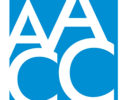Report roundup
By AACC 21st Century Center Staff
July 18, 2019
A monthly roundup of reports of interest to the community college sector.
Here are three reports you should know about this month.
1. Colleges are seeing small gains in student persistence. For students who started college in fall 2017 at two-year public institutions, the persistence rate was 62.3 percent, up 0.1 percentage point from the prior cohort year, and up 1.3 percentage points in comparison to the fall 2009 cohort, according to a new report. The persistence rate was 69.7 percent for those who entered college on a full-time basis, compared to 56.3 percent for their part-time counterparts. These data are highlighted in a Snapshot Report from the National Student Clearinghouse Research Center. The report also notes that among students who entered college at two-year public institutions in fall 2017, Asian students had the highest persistence rate at 72.9 percent, followed by white students (67.1 percent) and Hispanic students (62.1 percent). Black students had the lowest rate (55.3 percent).
2. College degree attainment is heavily dependent on race and geography, according to a Center for American Progress report and accompanying interactive map. College degrees are held largely by those in urban and suburban areas. The lowest-attainment counties, meanwhile, are heavily concentrated in rural areas. About 21 million adults without a college degree live in rural counties. Why? In some cases, it’s due to a lack of access to postsecondary options (rural counties are home to just 14 percent of the nation’s college campuses). Access to online opportunities also are hindered: only about 63 percent of people in rural areas have broadband internet access in their homes, compared with 75 percent of people in urban locales. The report’s authors suggest that overcoming barriers to college attainment requires “supporting the success of all students—not just those who are straight out of high school and attending full time, or those who borrowed for a bachelor’s or graduate degree.”
3. Federal job training programs — with the exception of apprenticeships — appear to be largely ineffective, according to a new White House report. An assessment of federal job training programs based on increases to wages and employment rates show little gain from these programs — 47 such programs across 15 different government agencies totaling nearly $19 billion in 2019, according to the White House Council of Economic Advisers (CEA). The report’s writers do say that services such as job searches and career guidance — which are often part of federal job training programs — show some minimal gains, but the actual training part does not prepare workers with the skills they need for changing and emerging jobs. However, CEA cites a 2012 study of registered apprenticeships in 10 states that found program completers earned, on average, $240,037 more over their lifetime than nonparticipants.



